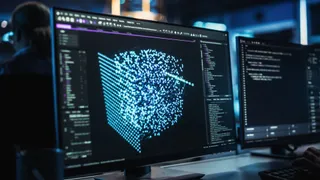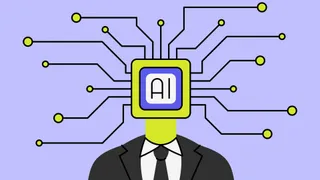
Explainer: Quantum computing and IP
Quantum computing is entering mainstream R&D—and establishing an IP strategy from a position of understanding the technology is key, says Gregory Aroutiunian of Bird & Bird.
For most people, quantum computing is as mysterious and distant as the concept of natural-language artificial intelligence (AI) seemed ten years ago. But the quantum computing paradigm is picking up momentum, and if fruitful the development promises to be more powerful, and potentially more disruptive, even than the current AI boom.
The international engineering community has seen it coming; in the security and encryption field, teams of engineers have been cooperating for years to create new ways of securing and protecting data. Existing encryption algorithms cannot stand up to the power of quantum computing.
The legal community would do well to look to the horizon too. There has already been IP litigation in England, and quantum computing is beginning to enter mainstream R&D with wider access being provided via the cloud, even as hardware remains noisy and small.
For IP teams, the stakes are immediate: deciding what’s patentable when ideas look like maths, when trade secrets beat disclosure, and how open-source licences intersect with patent rights.
This explainer gives a practical introduction to what the tech is (briefly), where it stands today, and how IP interacts with the field.
How it works
Ordinary computers represent data in binary digits—‘bits’—as either 0 or 1. A quantum computer extends this concept further based on quantum mechanics to create ‘quantum bits’, or ‘qubits’.
These can exist as 0, 1, or both at the same time. Thanks to certain properties of qubits, adding more qubits doesn’t just add computing power—it helps it grow exponentially.
This unlocks a great deal of power at the expense of complexity. In theory, a quantum computer with enough qubits could examine an astronomical number of possibilities simultaneously. This parallelism is what gives quantum computing its potential power.
However, it’s important to note that a qubit yields a definite outcome (either 0 or 1) only when measured—which breaks the superposition. The secret to quantum computing is designing algorithms that harness superposition and entanglement so that when qubits are measured, the right answer pops out with high probability.
From theory to practice
Quantum computers currently come in several hardware variants, each with unique advantages and challenges, such as: superconducting circuits, trapped-ion qubits, photonic qubits, neutral-atoms, and other specialised or emerging platforms.
For each of these different types of hardware, several factors matter: qubit number, noise control (how many errors happen and how severe they are), connectivity (what multiqubit gates are available), and clock cycle.
Practical use of quantum computers is still at an early stage given the difficulties in creating the numbers of qubits required to solve real-world problems, but organisations are beginning to find ways to integrate them into existing workflows in preparation for when the technology matures.
Currently, most quantum use in workflows is hybrid. Organisations treat quantum computing as a specialised accelerator for part of a larger problem. These tasks often use hybrid algorithms and are accessed via the cloud, and quantum computing platforms let users submit jobs to hardware integrating quantum calls into ordinary software workflows.
The result is a field where progress is real but uneven—good enough to influence R&D pipelines and product roadmaps, but not yet good enough for universal, fault‑tolerant computing.
Real world applications, IP challenges, and risks
Some of the key interactions between IP law and quantum computing involve the intersection of patents and copyright—each of which impacts how companies protect quantum computing hardware and software, and how companies can come together to collaborate and innovate.
Patents & patentability
Just as in traditional computing, innovations in quantum computing span hardware, software (algorithms), and system-level inventions. These all face varying patentability standards worldwide.
Generally, quantum hardware inventions are patentable as tangible technical advancements. However, a core patent issue is the line between patentable quantum inventions and unpatentable abstract ideas or scientific theories. Quantum computing blurs this line because many innovations are rooted in complex mathematics and quantum mechanics.
Patent offices require that an invention be claimed in a manner that is more than just the underlying mathematics. In practice this means tying algorithms to real-world hardware implementation or tangible technical outcomes, or incorporating algorithmic steps into system or device claims.
Another approach is pursuing patents on use-cases or applications of algorithms: eg a patent on a quantum algorithm specifically applied to drug molecule simulation or cryptographic key generation, thereby framing it as a method of solving a chemical or security problem (technical domain) rather than an abstract sequence.
Quantum computing patent applications also face unique challenges in meeting disclosure requirements for the enablement or sufficiency standard—for example, the European Patent Office (EPO) assesses sufficiency as of the application’s priority date—if the claimed quantum algorithm requires capabilities beyond what existing quantum hardware could do at that time, it may be deemed not fully enabled.
Alternatives to patents
As an alternative to patents and the accompanying public disclosure, companies should consider keeping ideas as trade secrets.
It’s a particularly suitable choice for quantum computing where development is difficult to inspect. For example, if an algorithm is complex and not easily reverse-engineered (especially if it can be run as a cloud service), keeping it secret can be viable such as for unique quantum error-correction techniques or proprietary compiler optimisations.
We also see many quantum algorithm developers choosing open publication (eg via academic papers or open-source code), which not only contributes to the academic discussion, but also has the effect of establishing prior art, preventing others from patenting, and encouraging standardisation. So a measure of open dissemination can be strategic too—it bolsters a company’s reputation and fosters adoption, even if it sacrifices direct patent control.
Copyright
Beyond trade secrets, quantum computing software—SDKs, compilers, calibration scripts—is protected as code. Copyright protects the expression of the code, ie, the specific implementation, structure, and text and not the underlying algorithm or functionality.
This means that while one cannot copy-paste or directly replicate protected quantum software without permission, the high-level quantum algorithm (if published) could be re-implemented by others in a different way.
In practice, most major quantum software platforms have embraced open-source models. The benefit is a larger developer base and faster adoption of quantum programming tools. Apache 2.0 (used by many quantum projects) includes an express patent grant, meaning that licensees can run the code without being sued by contributors.
As we have seen in major software applications and developing fields though, not all licences are so permissive, and codebase licences can change—so while this is true for some applications today, it may not always be the case.
Data
A developing area is the status of quantum-specific data sets—for example, collections of quantum circuit benchmarks, experimental result datasets, or training data for quantum machine learning models. Pure data often isn’t protected by copyright if it’s purely factual or numerical.
However, a curated dataset could benefit from copyright in the selection or arrangement of the data, or be protected by sui generis database rights (in the EU) if substantial effort went into obtaining/organising it.
In practice, many datasets (eg, IBM’s circuit libraries, or academic benchmark sets) are released openly to spur research. Companies should be mindful, though, if they plan to rely on proprietary datasets (for training a quantum AI model, for instance)—they need to secure rights or ensure the data isn’t encumbered.
What’s next for quantum computing?
Over the next five to ten years, progress in quantum computing will be measured less by headline qubit counts and more by quality-adjusted scale: lower error rates, longer coherent circuit depth, and credible demonstrations of small error-corrected qubits.
We expect steady, incremental gains rather than a single breakthrough and ‘quantum advantage’ (when quantum computers out-perform classical computers in real world problems) should appear first in narrow, well-structured problems—for example, specific optimisation or chemistry subroutines.
However, there might be bigger IP challenges ahead for the industry. It’s a research field with different ideas being developed and protected by many companies at several levels of abstraction—though there is a dialogue of open development and licensing at the same time.
As some solutions win out over others, the market will probably consolidate: what happens to the IP will be important from the perspective of competition, open development and standardisation.
Takeaways
IP is a major component of valuation and negotiating leverage for many in the field, and can materially affect financing, partnerships or exit options.
Intellectual property is a major component of valuation and negotiating leverage for many in the field, and can materially affect financing, partnerships or exit options. If the development of other major technology in the past is an indicator for quantum computing in the future, then as the market matures and consolidates, acquisitions and mergers are likely to focus on IP portfolios, people and know-how.
An IP strategy now, grounded in a real understanding of the technology, could be the lever that converts research into defensible enterprise value.
Further reading
IBM Research—What is Quantum Computing?
A primer on quantum computing from IBM, explaining key concepts and how quantum differs from classical computing, with examples of potential uses (good for building foundational understanding).
European Patent Office—Patent Insight Report: Quantum Computing (2023)
A report by the EPO analysing global patent trends in quantum computing, identifying key players, technological focus areas (like error correction, qubit types), and the growth of innovation in this field. This offers a window into how the IP landscape is evolving alongside the technology.
Gregory Aroutiunian is a senior associate in the IP team at Bird & Bird. He can be contacted at gregory.aroutiunian@twobirds.com.
Editor's picks
Editor's picks
More articles
Copyright © worldipreview.com 2024 | Headless Content Management with Blaze

